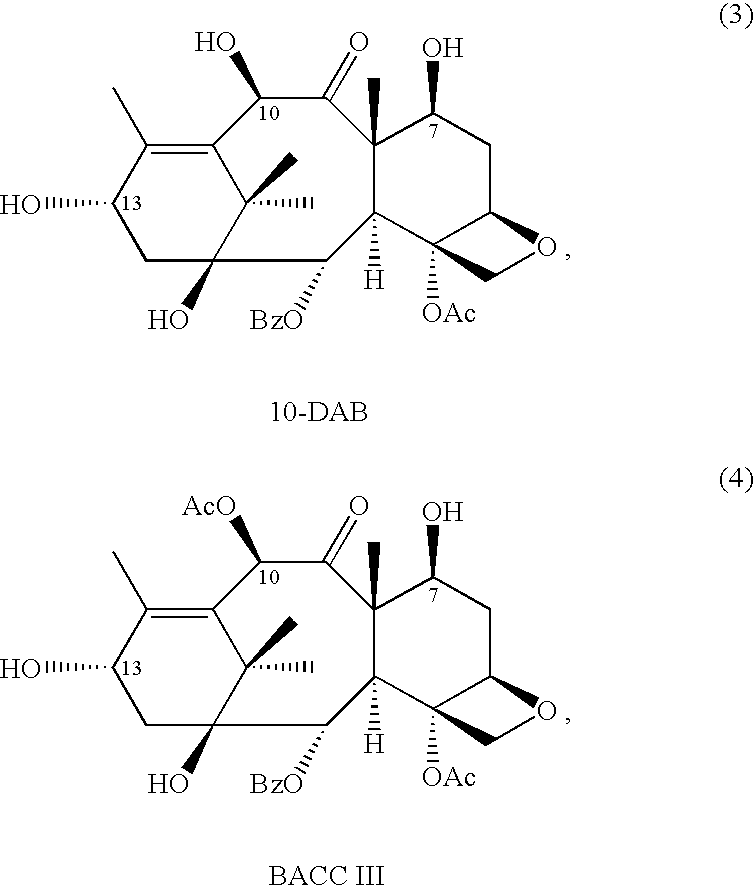Semi-synthesis of taxane intermediates from a mixture of taxanes
a technology of intermediates and taxanes, applied in the field of semi-synthesis of taxanes, can solve problems such as structural complexity of taxanes
- Summary
- Abstract
- Description
- Claims
- Application Information
AI Technical Summary
Benefits of technology
Problems solved by technology
Method used
Image
Examples
example 1
Extraction of Taxanes from Taxus Canadensis
[0084] Needles from the Canadian yew (Taxus Canadensis) were collected in Quebec. The dried needles (3 kg) were extracted by percolation with methanol at room temperature three times using 10 L, 6 L and 6 L volumes of methanol in a glass container equipped with a filter at the bottom with a tap. The extraction with each subsequent volume of methanol was left for 24 hours and the mixture was filtered into an erlenmeyer flask by opening the tap at the bottom to give a crude extract. The crude methanolic extracts were combined and concentrated to give about 1.1 L of a crude methanol extract concentrate.
example 2a
Filtration of the Crude Extract
[0085] A silica / charcoal filter was prepared as follows. Norit SA3 charcoal (0.5 kg: 100 mesh—Aldrich) was mixed with celite (0.5 kg: AC 2098T—Anachemia) and placed into a coarse scintered glass funnel. The charcoal-celite mixture was soaked with dichloromethane:methanol (9:1) and washed with an additional 1.0 L of the same solvent. The crude methanol extract concentrate was filtered on this bed of charcoal and then washed with 1.5 L of dichloromethane:methanol (9:1). The collected mixture was evaporated under vacuum using a rotovap and the residue was left under high vacuum for one hour using a vacuum pump to remove all traces of methanol.
example 2b
Liquid-Liquid Extraction
[0086] The crude methanolic extract concentrate was partitioned with a mixture containing methanol (400 ml), water (800 ml) and hexane (1100 ml) in a 5 L separatory funnel. After allowing for the solvents to partition, the top layer with dark green color was tested and discarded, the lower aqueous phase was extracted with methylene chloride two times. The methylene chloride extracts from two partitions were combined and then concentrated to generate 270 ml of DCM extract concentrate containing the plurality of taxanes.
PUM
| Property | Measurement | Unit |
|---|---|---|
| temperature | aaaaa | aaaaa |
| temperature | aaaaa | aaaaa |
| volume | aaaaa | aaaaa |
Abstract
Description
Claims
Application Information
 Login to View More
Login to View More - R&D
- Intellectual Property
- Life Sciences
- Materials
- Tech Scout
- Unparalleled Data Quality
- Higher Quality Content
- 60% Fewer Hallucinations
Browse by: Latest US Patents, China's latest patents, Technical Efficacy Thesaurus, Application Domain, Technology Topic, Popular Technical Reports.
© 2025 PatSnap. All rights reserved.Legal|Privacy policy|Modern Slavery Act Transparency Statement|Sitemap|About US| Contact US: help@patsnap.com



